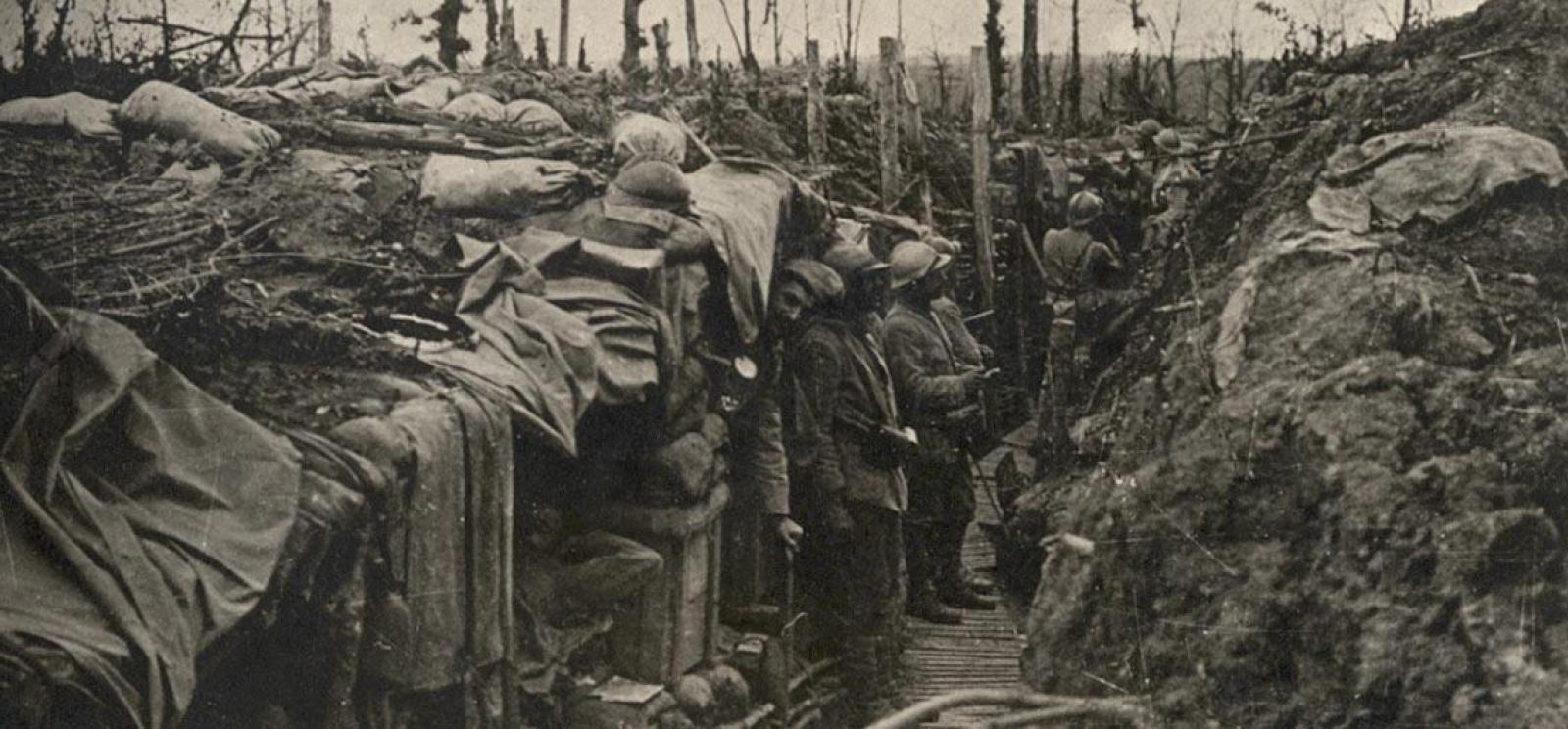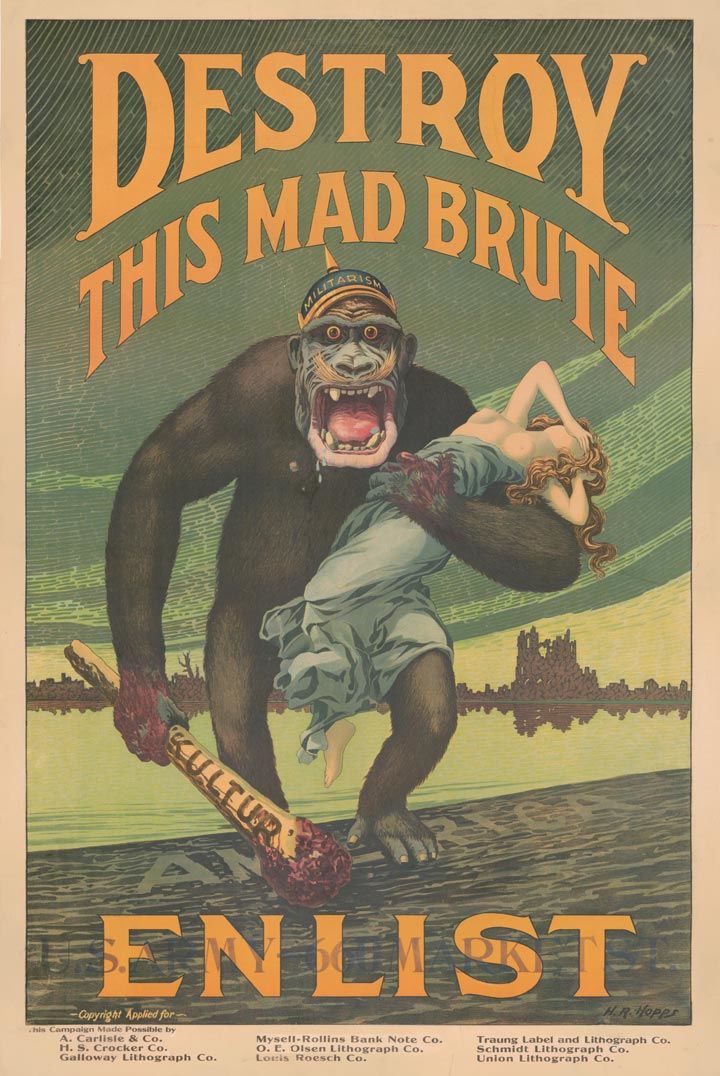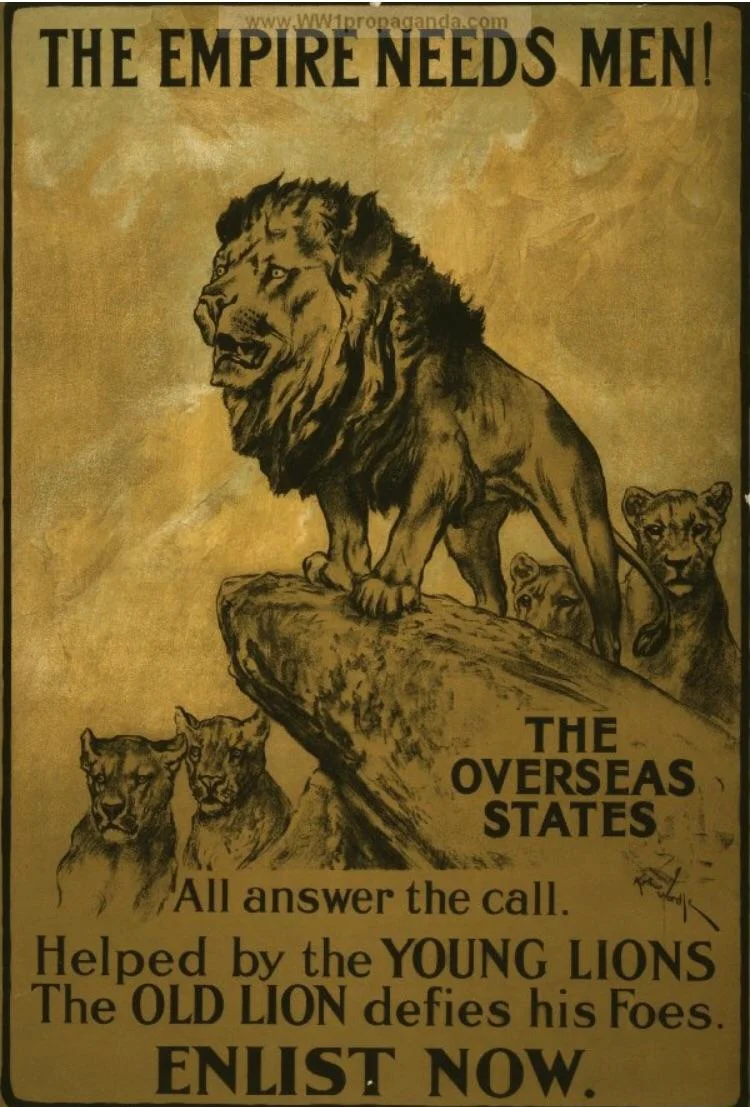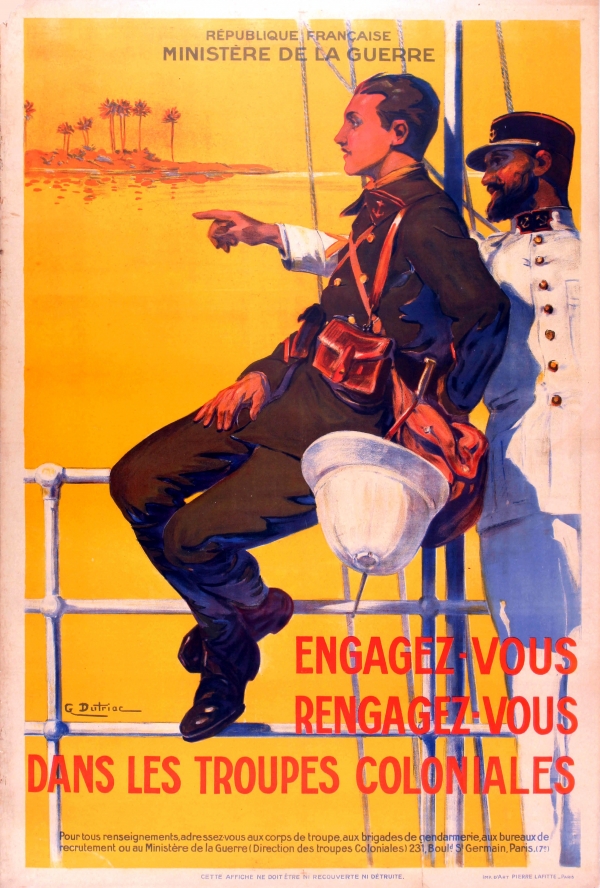Jed Quiaoit
VladimirGenkovski
AP World History: Modern 🌍
577 resourcesSee Units
World War I is the first global conflict that is globally acknowledged as a form of total war - one in which everyone’s a target, any weapon is permitted, and the scope of the battlefield is unlimited. We’ll see a lot of historic firsts in WWI in terms of conducting war, from the amount of devastation to the types of military technology used.
War on Two Fronts
As you remember from Section 7.2, Germany is at war with Russia and France, as well as their allies. Unfortunately, this leaves Germany in a tough spot because it is flanked by France on its west and Russia on its east. Knowing this, experts crafted a plan to defeat France first and then invade still-industrializing Russia, given the latter’s delay in mobilizing all its forces.
On the Western Front, Germany had initially made significant gains, advancing rapidly into France and almost reaching Paris. The plan completely fell through as the Germans underestimated the might of the French. The German army was eventually stopped by the combined forces of France and Britain, who were able to hold off the German advance at the Battle of the Marne in September 1914. By the time Russia was able to consolidate and deploy its troops, Germany still hadn't defeated France. As a result, Germany had to fight on two fronts: the Western Front and the Eastern Front.
Image Courtesy of wn
On the Eastern Front, Germany was initially successful in pushing back the Russian army, but by 1915, the Russian army had recovered and was able to launch a counterattack. The Eastern Front was much larger and more fluid than the Western Front, with both sides engaging in large-scale maneuvers and offensives. Fighting on two fronts put a great strain on Germany's resources and manpower, as it had to divide its forces between the Eastern and Western fronts. Additionally, the Eastern Front was much longer, and the Russian army was much larger than the German army, which made it difficult for Germany to achieve a decisive victory. This, in turn, led to the German army being stretched thin and being forced to fight a war of attrition, which ultimately led to its defeat.
New Military Technology
Who won between Spanish conquistadors and Native American tribes? Who won between European colonizers and African societies during the Scramble for Africa? It is common knowledge that whoever has the best technology won. With the world still recoiling after the explosion of industrialization less than a century ago, nations focused on developing better weapons than existing ones as they hoped to swiftly close the war and reduce human and economic losses.
Modern warfare isn’t just about brute force as it also has a strategic element that closes the gap between a 100,000-man strong battalion and a 1,000-man strong regiment. Underground trench systems were established by both sides along the eastern and western fronts to protect troops from artillery and gunfire from above the ground, which in turn created “no-man’s lands.” These refer to the areas between trenches because those going into them had near-zero chances of survival due to the possibility of being mortally wounded or killed by either ally or foe.

Trench warfare. Image courtesy of National WWI Museum and Memorial
The trenches were complex systems of interconnected ditches with multiple layers and sections, including front-line trenches, support trenches, and reserve trenches. They were also equipped with barbed wire and other obstacles to prevent enemy troops from advancing. The soldiers in the trenches were often subject to harsh conditions, including exposure to the elements, disease, and poor sanitation.
Some new (deadly) weapons we see in this war:
- Poison gas ☢
- Tanks 💥
- Fighter planes ✈
- Flamethrowers 🔥
- Machine guns 🔫
- Submarines ⚓
The Home Front
When a country is at war, its economy shifts towards one heavily focusing on the production of weapons, ammunition, and aid packages alongside more supplies that’ll aid troops abroad. The Home Front refers to everything the government does to support the nation’s cause in war. People ration their supplies. Governments created production quotas. Women worked in place of men in factories and industries. Dissent was crushed through censorship and strict punishments.
To encourage intense and fervent nationalism while avoiding opposition that could hinder war efforts, governments resort to political propaganda, any art or media that promotes local support against a cause or enemy being degraded in such works. When we hear the word “propaganda” today, people often connect it to something negative: manipulation, lying, and misinformation. Why is that so? Throughout any modern conflict, propagandas are not necessarily accurate. Instead, it imparts a political message that clearly defines who’s the good and bad guys and calls for the people to help the good guys win at war.

Source: The Metropolitan Museum of Art - New York City
Notice how the poster above looks down on the Central Powers as an ape instead of humans and is clutching Lady Liberty in its arms, a potential representation of the endangerment of American ideals. Each country has its own cast of goodies and baddies in its propaganda posters and artwork. This one motivates the people (its audience) to step up and join the war effort by working at factories and sending supplies to vanquish the “apes” once and for all. Interestingly, the United States produced higher numbers of propaganda posters during WWI more than any other belligerent.
Countries used propaganda not only in their mainland but also in their colonies.

British overseas propaganda. Image courtesy of Reddit
Look at this poster. The mighty lion, representing the British Empire, is seeking help from its cubs, representing the overseas territories. This way, war was depicted as a just and heroic struggle, which promoted the idea of loyalty to the British Empire.

French overseas propaganda. Image courtesy of AntikBar
This poster represents the French approach to overseas propaganda. Similar cases were seen in the Belgian Congo, the German colonies, and the Italian colonies. These examples show how colonizing countries used propaganda to mobilize support for the war effort among the people in their colonies. The propaganda was tailored to appeal to the local population and emphasized loyalty to the colonizing country, and emphasized the idea of sacrifice for the mother country.
When analyzing propaganda posters for any part of the AP exam, think of what they portray, how they portray something, the audience of the works, and the overarching purpose of whoever made them. Sound familiar? It’s pretty similar to the HIPP analysis strategy for the DBQ!
Activity 3
Propaganda, Propaganda... Identify the (1) author (country), (2) content, (3) audience, and (3) the underlying message of the propaganda poster below.
Image Courtesy of WWI Poster Collection

Answers
- Author: Irish nationalist (Ireland)
- Content: Recruiting young men for the military draft
- Audience: Young men, potential recruits
- Message: Support the nation by fighting in the war
Browse Study Guides By Unit
🐎Unit 1 – The Global Tapestry, 1200-1450
🐫Unit 2 – Networks of Exchange, 1200-1450
🕌Unit 3 – Land-Based Empires, 1450-1750
🍕Unit 4 – Transoceanic Interactions, 1450-1750
✊🏽Unit 5 – Revolutions, 1750-1900
🚂Unit 6 – Consequences of Industrialization, 1750-1900
💣Unit 7 – Global Conflict, 1900-Present
🥶Unit 8 – Cold War & Decolonization, 1900-Present
✈️Unit 9 – Globalization, 1900-Present
✏️Frequently Asked Questions
🤔Exam Skills
👉🏼Subject Guides
📝AMSCO Notes

Fiveable
Resources
© 2025 Fiveable Inc. All rights reserved.